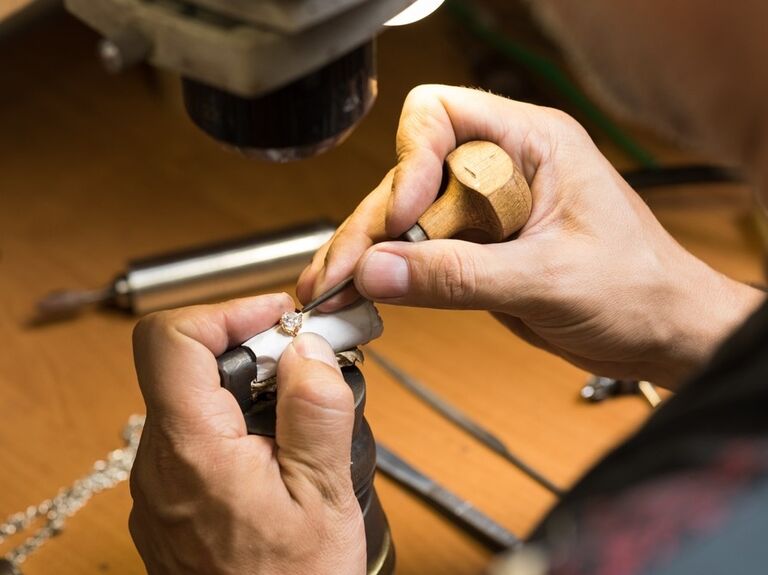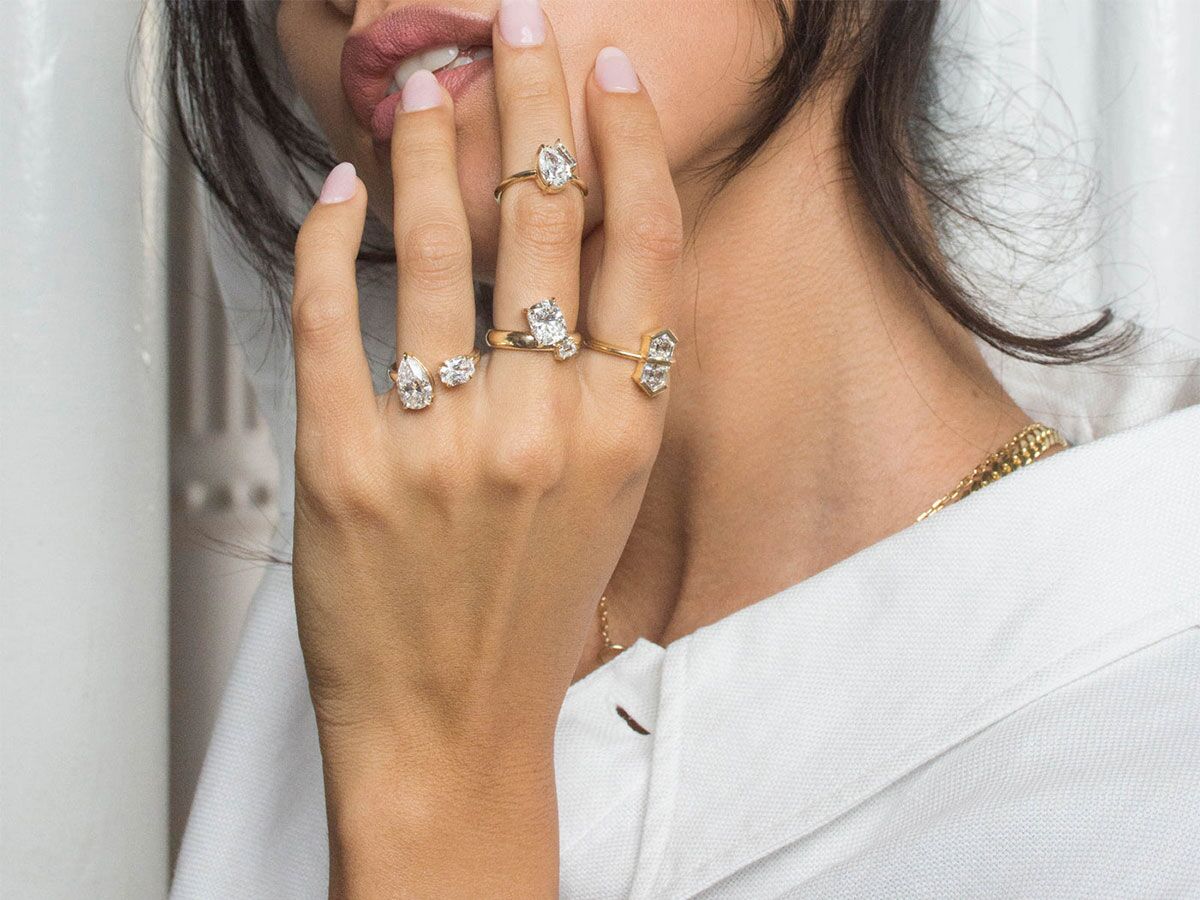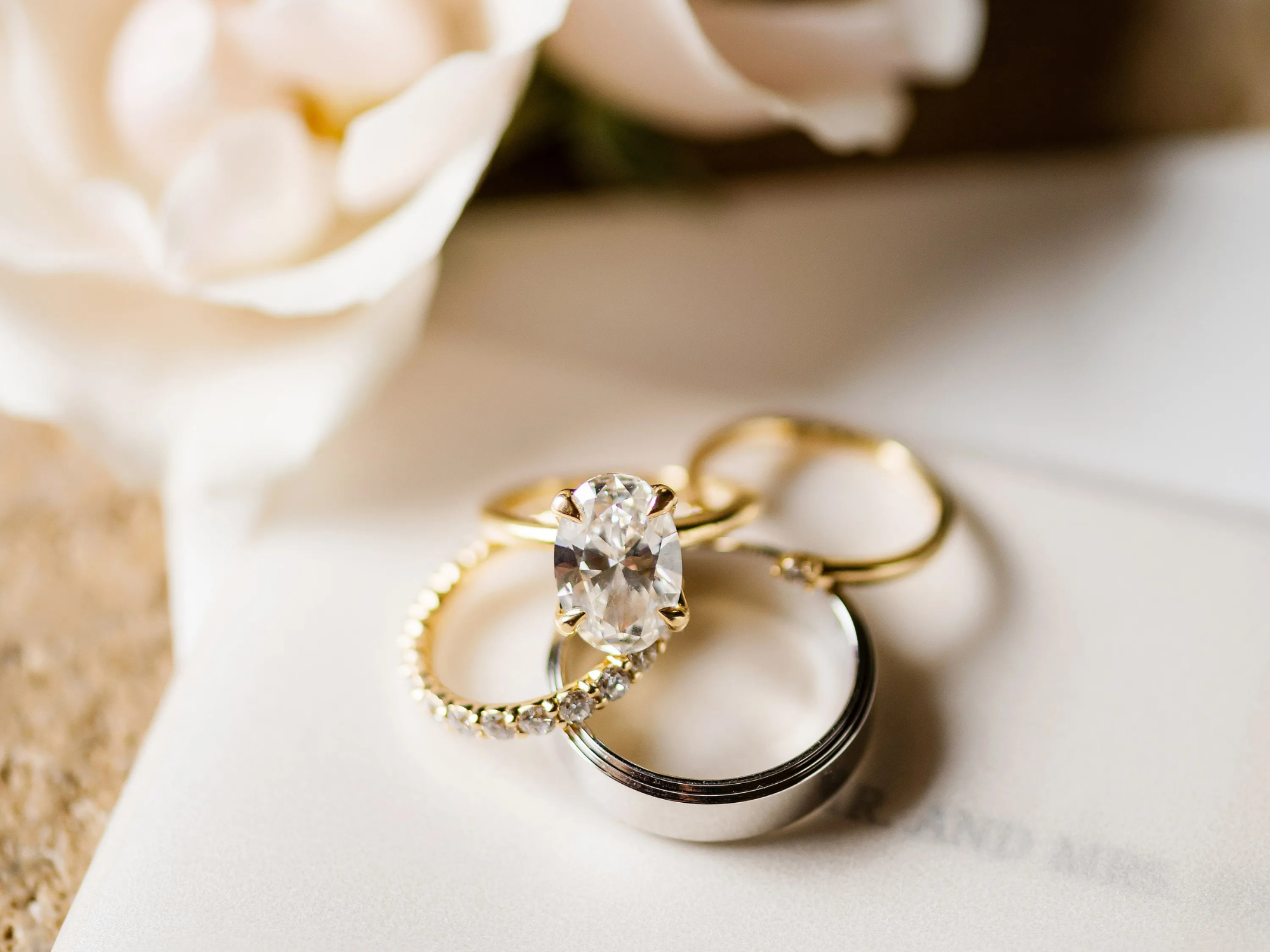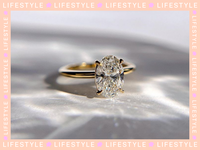Can Diamonds Chip? Expert Tips to Protect Your Ring From Damage

Once you've found your dream engagement ring, you'll want to take care of it to make sure it lasts for years to come. If you're reading this, you're likely wondering: can diamonds chip? We spoke to the experts to weigh in on all things diamonds. Sarah Ortega, founder of Sarah O. Jewelry, and Allison and Quaid Childers, jewelers at Allison Quaid, shared their industry knowledge. From knowing can you chip a diamond to how to protect your diamond, we've covered all of the basics when it comes to keeping your ring intact.
In this article:
- Can Diamonds Chip?
- What Makes a Diamond More Susceptible to Chipping?
- Can a Chipped Diamond be Repaired?
- How to Protect Your Diamond Ring From Chipping
Can Diamonds Chip?
Despite being the hardest stone, diamonds can still chip if they are hit or impacted a certain way. "While diamonds are known for their strength, they can chip over time under certain conditions," Ortega explains. "Although typically only another diamond can cut or chip a diamond, aggressive force or impacts on vulnerable areas, such as a stone's thin girdle or pointed areas, can lead to chipping."
It is especially important to protect your engagement ring from chipping, as rings go through the most wear and tear on a daily basis. Quaid Childers tells us "Stones set in rings receive a much tougher barrage of impacts than earrings, necklaces and brooches."
The good news is that a diamond is not more susceptible to chipping simply because of time. "Yes, although time itself is not a factor; an older stone as opposed to a newly cut diamond is not more likely to chip, " Allison Childers explains. "It is the wear and tear over time that increases the odds of striking the diamond against something hard that could result in a chip."
What Makes a Diamond More Susceptible to Chipping?
There are a few key factors that can make a diamond more susceptible to chipping. Whether it's a massive impact or having a certain shape of diamond, you'll want to consider these risk factors when shopping for your diamond engagement ring.
Impact
The most common cause for diamond chipping is impact. Whether you hit your hand against a hard object or drop your ring, any force can potentially result in a diamond chip. While your everyday wear and tear likely won't result in diamond chipping, you always want to treat your engagement ring with care to avoid any damage.
Allison Childers says, "Diamonds chip as a result of an impact occurring at a point of internal structural weakness. Additionally, the manner in which a diamond is cut can increase its chance of chipping. For example, a very thin girdle (edge) can leave a diamond more susceptible to chipping."
Diamond Shape
When choosing a diamond shape, you'll want to consider which shapes are most susceptible to damage. Certain diamond shapes can leave your ring more susceptible to chipping, especially those with points. "Diamond shapes with points or sharp corners are more susceptible to chipping," Allison Childers says. "These include marquise, pear, radiant, triangular and princess-cut diamonds." While you can certainly still have a beautiful ring in one of these shapes, you'll want to take extra care in protecting it from potential damage.
These thin points are points of structural weakness that can chip off easily compared to a curved stone ring style. "Generally, oval and round diamonds are less susceptible to chipping," Quaid Childers elaborates.
Ring Setting
Having a protective setting on your diamond—especially if your diamond shape is more susceptible to damage—will help to protect it. "To prevent chipping, choosing the right setting is crucial," Ortega emphasizes. "Bezel settings are often recommended for thinner stones, as they provide extra protection by covering the vulnerable edges."
Can a Chipped Diamond be Repaired?
Yes and no. While a diamond chip can not be reattached to the diamond, there are ways of polishing or recutting the diamond to return it to its original look. While this may slightly impact the carat weight of your diamond, your jeweler will work to remove as little of the diamond as possible depending on the level of damage. This may even be covered in your engagement ring insurance.
"In mild instances, the diamond can be re-polished, and the removal of a thin layer of diamond in the process successfully repairs the chip," Quaid Childers explains. "In more severe cases, the diamond can be recut, entirely eliminating the chip and reconfiguring the faceting pattern of the stone to adjust to its post-chip parameters."
How to Protect Your Diamond Ring From Chipping
While you can't guarantee a diamond won't chip, there are some protective measures you can take to lessen the risk of damage. From protective settings to proper storage, taking care of your ring is the best way to keep it looking its best for years.
Remove Your Ring as Necessary
As much as you love your ring, it's important to know when to take it off to avoid damage. If your lifestyle involves a lot of high-impact activities, you should remove your ring when partaking in anything that could increase the risk of damage. "Removing your diamond jewelry during intense physical activities, such as mountain biking or other impact-prone tasks, can significantly reduce the risk of damage," Ortega shares. "Caring for your diamond and being mindful of how and when you wear it is essential for its longevity."
Store Your Ring Properly When Not Worn
When it is not being worn, be sure to store your ring in a safe place. Allison Childers recommends storing it in a box with separate compartments or in an individual padded pouch. This could also mean keeping a ring dish by your sink for when you're doing the dishes and washing your hands.
Have a Protective Setting
Protecting your ring from damage starts by selecting a protective setting "Securely set stones in well-made pieces are not prone to chipping because they are protected by the security, durability and quality of such pieces," Quaid Childers tells us. "It is essential that the tips of pointed stones are sufficiently protected by the setting mechanism, so that impact with various materials and edges does not lead to the chipping of the stone."























